Before the modern technology of retroflective sheeting was used to increase the nighttime conspicuity of signs along the highways and byways of the United States — and before anyone with a computer could have easy access to typefaces which either emulated the ones used on official signage — button copy highway signs were predominant.
Button Copy Highway Signs: I Really Miss Them
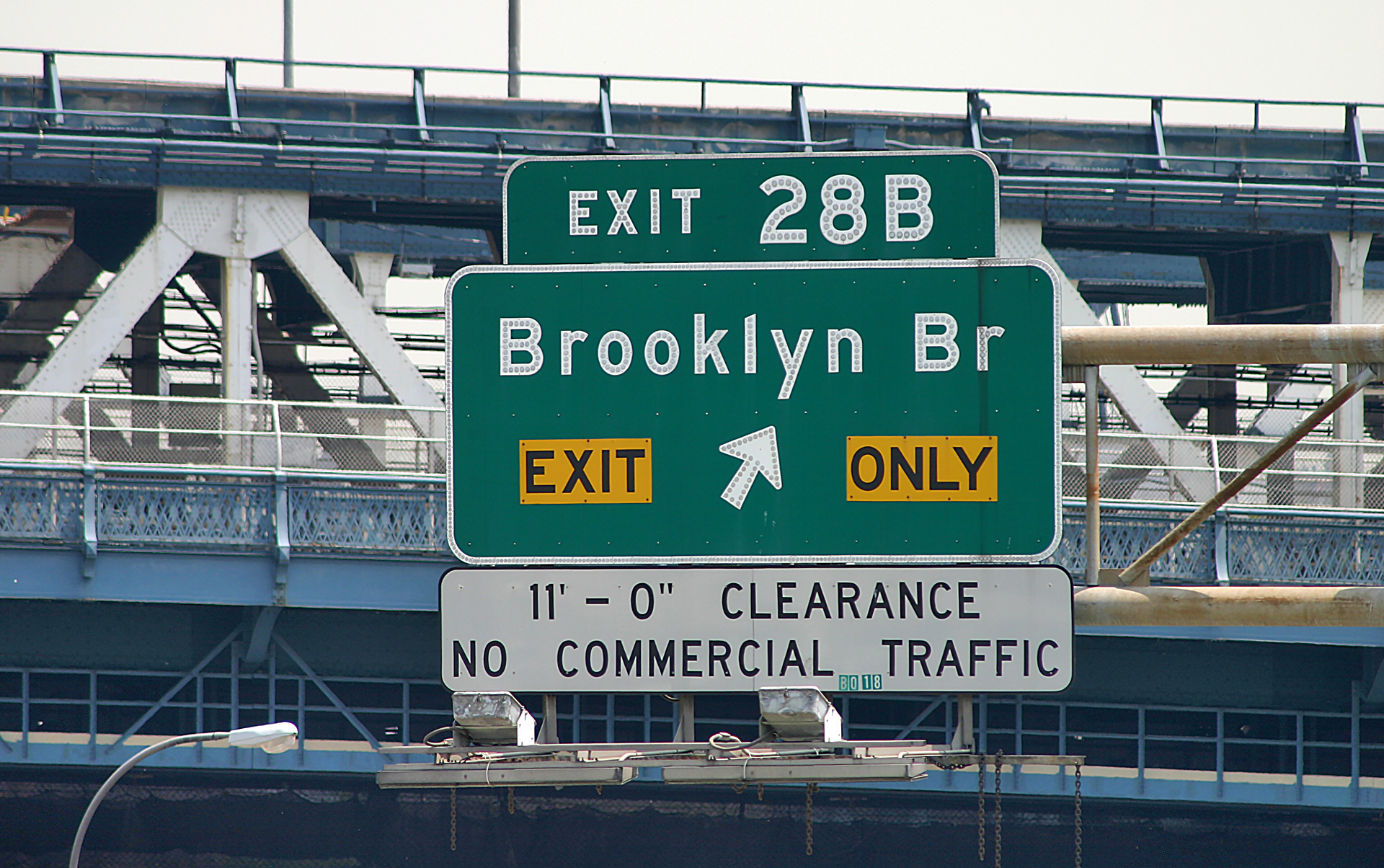
Because Brooklyn only has a few highways — the Belt Parkway, the Gowanus Expressway, Interboro Parkway, a portion of Interstate 278 between the Verrazzano Narrows Bridge and the Belt Parkway, and the Brooklyn-Queens Expressway, at which the above photograph was taken — seeing the name Brooklyn in the button copy typeface was always quite rare; and I always delighted in seeing it.

The state of Ohio was one of the last bastions of the proliferation of the regular use of highway signs with button copy — but in recent years, they have been disappearing quickly there, too.

The term button copy comes from how the round retroreflective “buttons” — which were comprised of transparent plastic and resemble typical reflectors — are either embedded in white plastic; or placed in rows which follow the contours of legend elements on the signs.

Look closely in Alabama and some highway signs with button copy can still be found — such as the ones shown in the above photograph over the westbound lanes of Interstate 20 and the southbound lanes of Interstate 59 near Interstate 359. They likely will not remain in service much longer due to a nearby construction project where older highway signs have been replaced with newer ones.
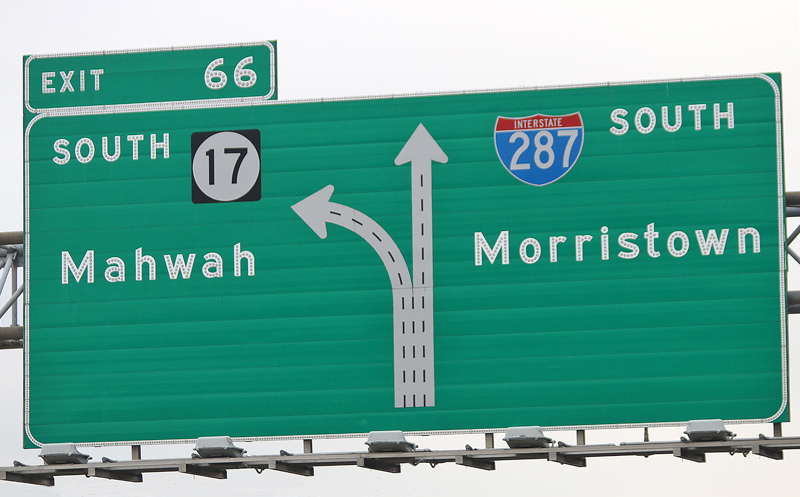
Highway signs with button copy on them are still relatively abundant in the state of New Jersey — including the ones shown in the above photograph over the southbound lanes of Interstate 287 just south of the border which New Jersey shares with New York.
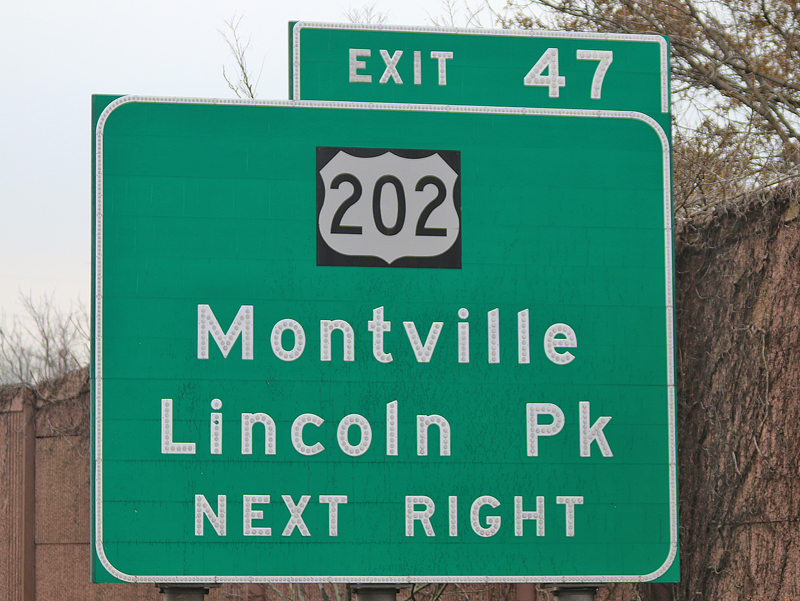
Several miles further south on Interstate 287 — for traffic in the northbound lanes — is this highway sign with button copy on it, with the exception for the shield indicating United States Highway 202, which instead uses retroflective sheeting.

A closer look at the sign more clearly shows the reflectors embedded in the white plastic — except for one rogue individualist in the lower case letter i in Lincoln, which decided to abandon the effort and left — and that close look includes the featured photograph in this article.
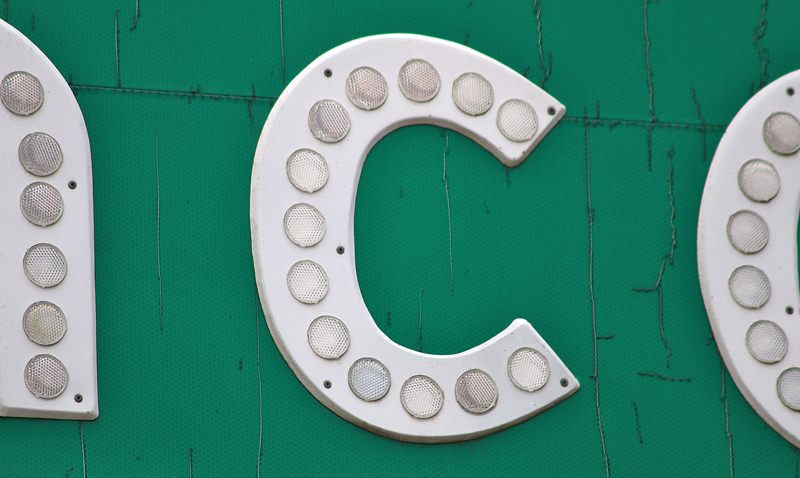
People may mistakenly believe that the typeface used for button copy and the typeface used for retroflective sheeting are exactly the same; but they are not: the lower-case letter c always reminded me of a horseshoe due to its odd shape, which never was replicated on highway signs with newer technology.
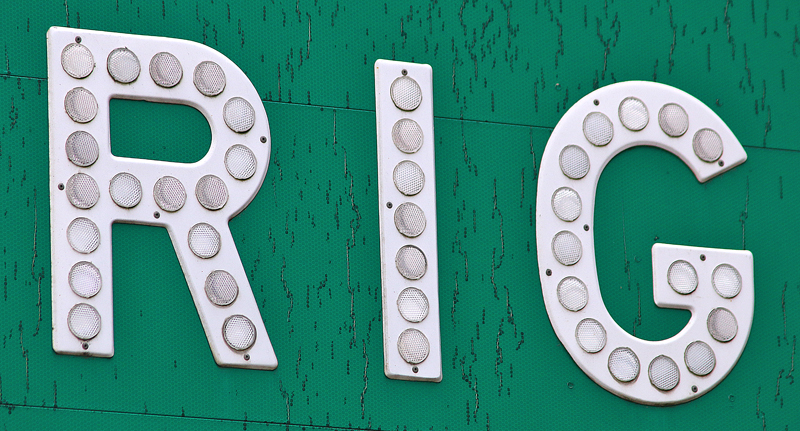
Unfortunately, newer technology has endangered highway signs with button copy, as they are increasingly disappearing forever from the landscape — along with the cracked and disintegrating weathered green background.
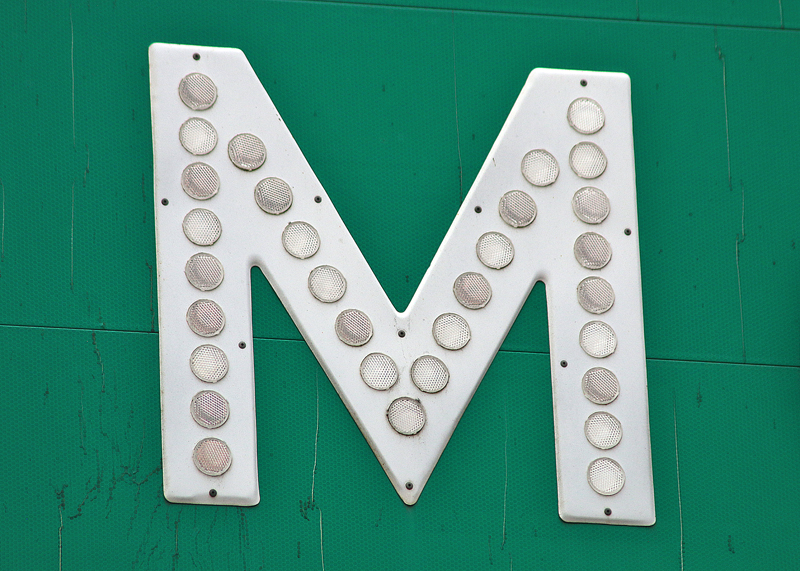
Final Boarding Call
I have been fascinated by traffic and highway signs all my life. Perhaps that is because they evoke the symbol of freedom by taking a carefree road trip along a distant highway. Maybe the reason is because I have grown up with seeing them.
I do not exactly know — but I miss those highway signs with button copy on them…
All photographs ©2007, ©2017, and ©2022 by Brian Cohen.

